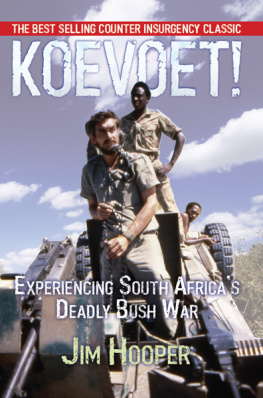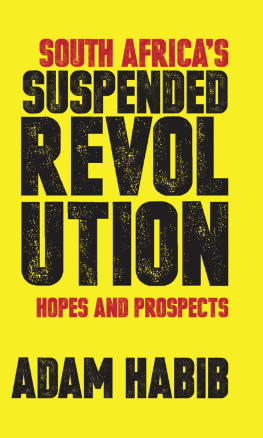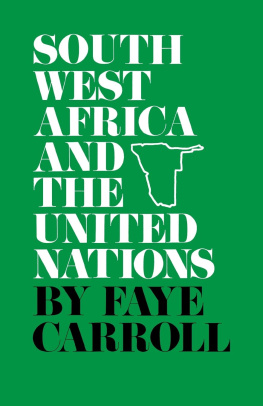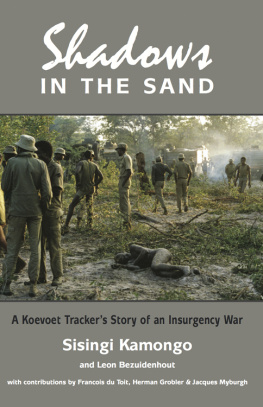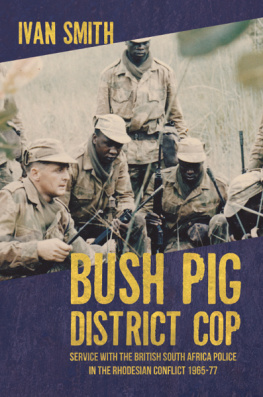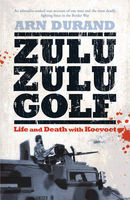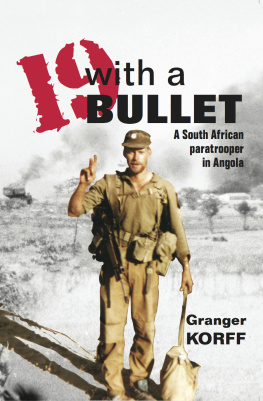
After graduating from the University of South Florida, Jim Hooper worked as a documentary research-writer for WFLA-TV in Tampa, with weekends set aside as a skydiving team captain and instructor. He gave up television to devote himself full time to jumping out of airplanes, logging over 3,500 freefalls and building the worlds premier skydiving center in Zephyrhills, Florida. His thirst for adventure unfulfilled, he sold the business in 1984 to realize a long-held dream of being a war correspondent and author.
Within two years, his byline was appearing in publications ranging from The Daily Telegraph of London to Janes Intelligence Review. Following publication of Koevoet and its American edition, Beneath the Visiting Moon, he collaborated on Flashpoint At the Frontline of Todays Wars and was a principal contributor to the best-selling Worlds Most Dangerous Places, and its companion, Hotspots. The only journalist to accompany the mercenaries of Executive Outcomes on operations, Hooper recorded their campaigns in his book Bloodsong. The Balkan wars of the 1990s found him crossing back and forth between the Croatian, Serbian and Muslim frontlines in search of stories, the most memorable when he was captured by Muslim extremists in central Bosnia. His previous book, A Hundred Feet Over Hell, is the story of his brothers tour in Vietnam, and has been ranked by veterans and non-veterans alike as a classic of the air warfare genre.
Co-published in 2013 by:
Helion & Company Limited
26 Willow Road
Solihull
West Midlands
B91 1UE
England
Tel. 0121 705 3393
Fax 0121 711 4075
Email:
Website: www.helion.co.uk
and
GG Books UK
Rugby
Warwickshire
Tel. 07921 709307
Website: www.30degreessouth.co.uk
This revised and expanded edition published by GG Books 2012, reprinted with
corrections in partnership with Helion & Company Limited
Previous editions: Koevoet, Southern Book Publishers, 1988; and Beneath the Visiting
Moon, Lexington Books, 1990
Designed and typeset by Farr out Publications, Wokingham, Berkshire
Cover designed by Farr out Publications, Wokingham, Berkshire
Printed by Gutenberg Press Limited, Tarxien, Malta
Text and photographs Jim Hooper 2012
ISBN: 978-0-9570587-0-5
DIGITAL ISBN: 978-1-9102948-5-7
British Library Cataloguing-in-Publication Data.
A catalogue record for this book is available from the British Library.
All rights reserved. No part of this publication may be reproduced, stored in a
retrieval system,or transmitted, in any form, or by any means, electronic, mechanical,
photocopying, recording or otherwise, without the express written consent of GG
Books.
Contents
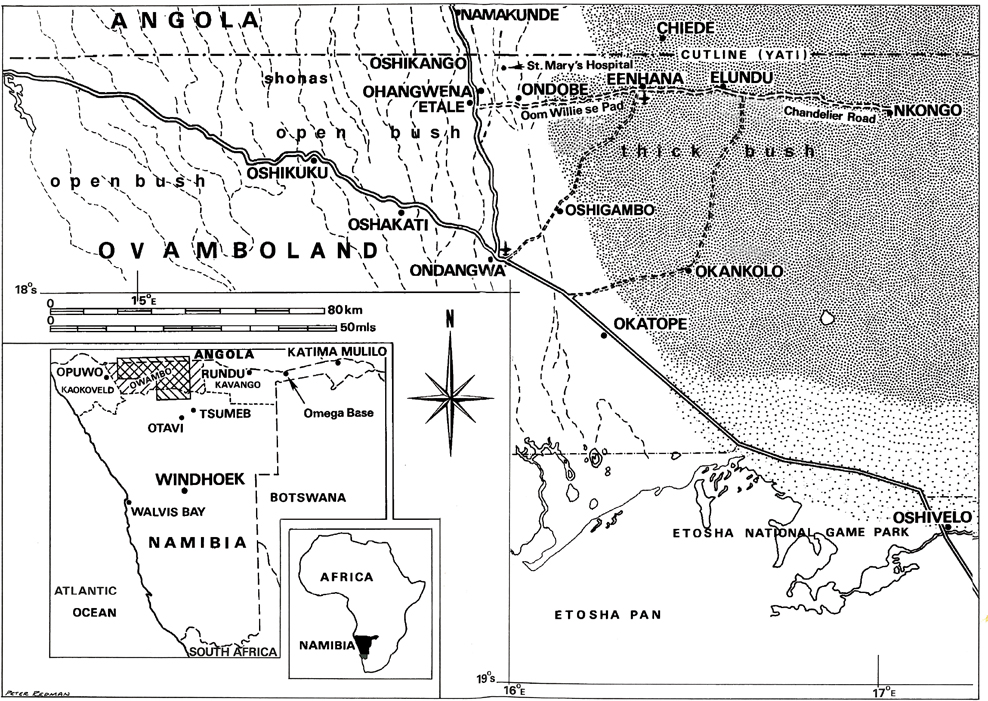
Dedication
N o author is dismayed at seeing his first work reprinted by popular demand, especially when given the opportunity to weave in dramatic material from voices that have been silent for more than two decades. Those who dug into their memories have given the story more depth and texture than any of us could have hoped for. Much credit must also go to publisher Steve Crump whose enthusiasm for the project allowed me the latitude to take this new edition several levels beyond the original Koevoet! and its American cousin, Beneath the Visiting Moon.
To answer a recurrent question from readers of previous editions, Ive added the route that took me from television writer to professional skydiver to selling home and business and setting off in pursuit of a boyhood dream. Each twist and turn in the journey was marked by a cast of walk-on characters that ranged from a Chinese general to panicky CIA spooks to Kenyan smugglers. Whether helping or hindering, comical or sinister, all influenced a zigzagging trail that was as unpredictable as the final destination.
The stars came later: Brigadier Rob Crowther, Defence Attach at the South African Embassy in London, who opened a door that led to Namibia and the United Nations most hated paramilitary group; then-Major Bernie Ley, who championed my return some months later; and General Sterk Hans Dreyer, who granted me permission to spend half a year embedded with his legendary operators. My unprecedented access to one of the most politically sensitive units of the era was without restrictions, yet at no time did anyone ask to see the manuscript before publication. You have to write what you see, Dreyer told me.
On the sharp end, it was the black and white policemen of Koevoet who showed me things never before seen by an outsider, and who kept me alive in spite of myself. I suspect I was more often than not a distraction, forever in the way and underfoot, and asking endless and tiresome questions, most of which they bore with great patience and not a little stoicism. To those who were there, thank you.
Preface
T his is the story of a war in Africa. As with all such tales, it deals with the brutality, fear and sacrifice that have been the fabric of all wars and all sides since man first banded together for mutual protection or aggression. But it is a true story, though told through the eyes of an outsider, and that alone must make it suspect to anyone who opens these pages. It is an account of people caught up in a little-known conflict in an even less-known part of the world, and if my journalistic detachment faded after seeing men I knew die next to me, I hope the reader will understand.
It was my war, my beat, in that absurd and proprietary way journalists have of labelling something which has forever touched them. Mine also because Id missed the one great conflict of my generation and went in search of its replacement long before understanding why. In retrospect, the story that emerged was as clich-ridden as the most hackneyed B movie of the 1940s: the eager novitiate, innocent beyond his years, who is grudgingly allowed a brief glimpse of combat by a band of warrior brothers. He goes away but is drawn back to share their lives. He learns fear, receives his red badge of courage, and finally leaves to tell their story.
Although one hand still complains when the weather turns cold and wet, that too was part of the search, an adolescent fantasy lurking in the mists. But when fantasy became reality I understood it was only luck that mattered. It rode close at hand and in undeserved abundance, deflecting the ultimate reality; others it deserted entirely. The eternal question: Why them and not me? There is no answer.
What is written here will not be popular in some quarters; the line between fashionable and unfashionable truth has been very carefully drawn, and a journalist crossing it does so at his peril. In 1987, my refusal to be held to ransom by political correctness saw 22 publishers recoil from what one editor described as a most unwholesome book. I was addressing yet another manuscript to one more publisher when the managing director of Hodder & Stoughton rang from London. Ive been trying to write you a letter, he said, but finally decided it would be easier to call. I have to say your book has caused more dissension amongst our editorial staff than anything to cross my desk in a very long time. Unfortunately, because of the political climate, theres no way we can publish in the UK. If its okay with you Id like to pass it to our South African imprint.
That a publishing house with a stable of bestselling authors saw merit in the story was at least partial vindication, but the battle wasnt over. When the manuscript reached Southern Books in Johannesburg, it was passed to a freelance copy editor whose sole job was to correct spelling and punctuation mistakes. He went further, penning a furious five-page letter on why it was too dangerous to be published. He began by warning that books might soon be added to the international boycott of South African products, suggesting that

